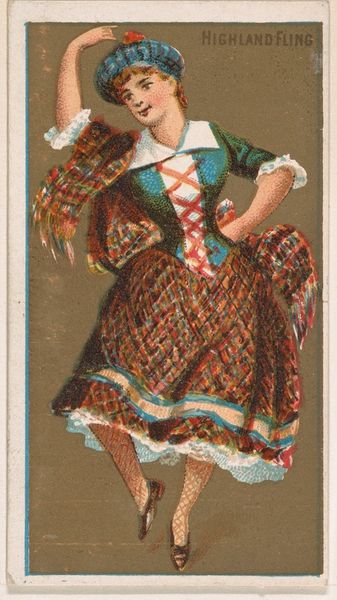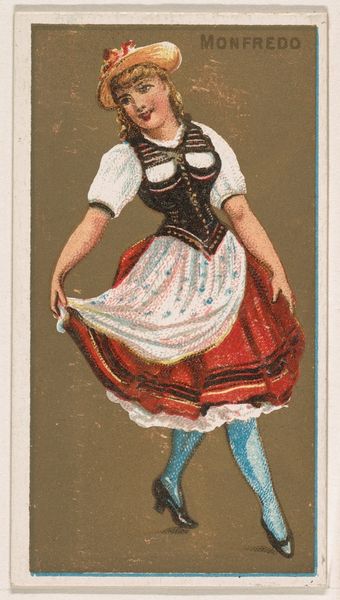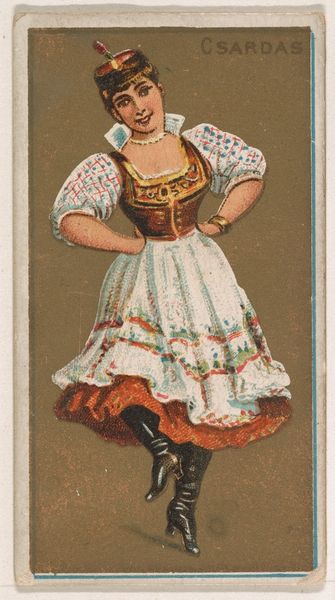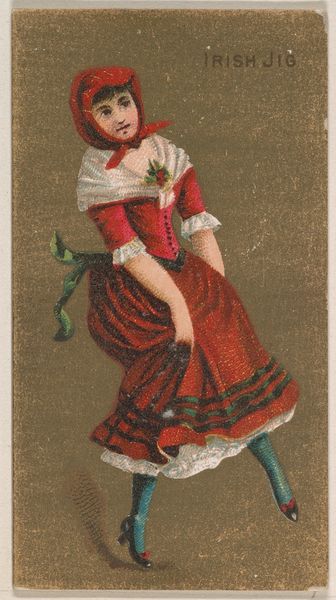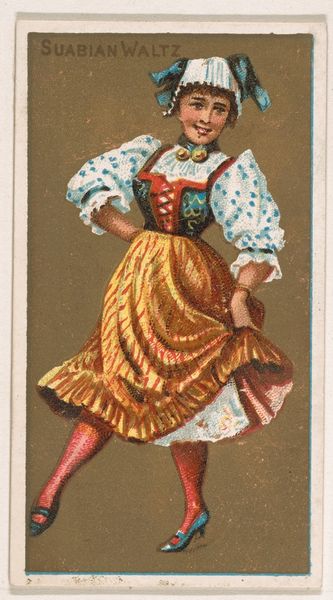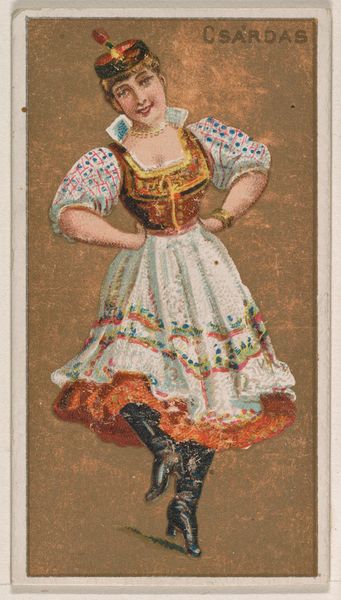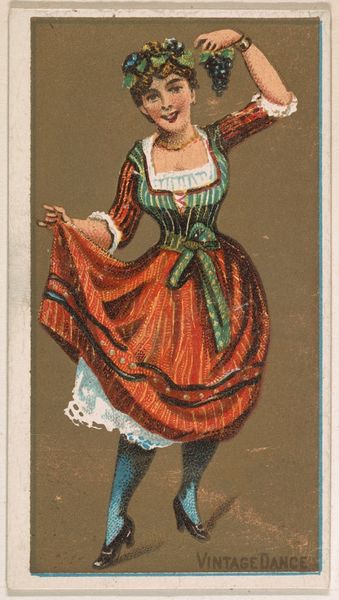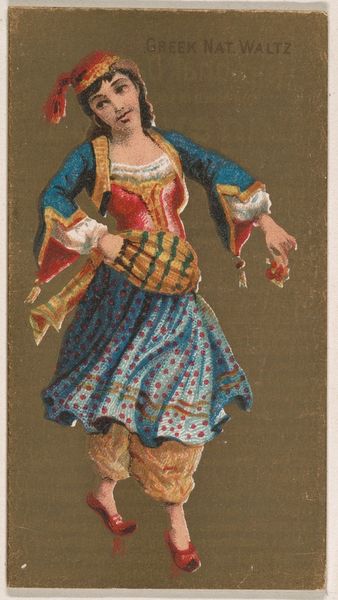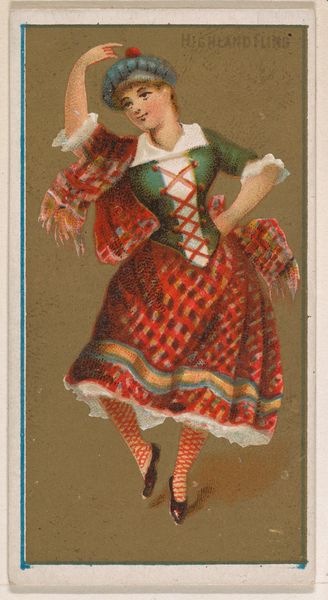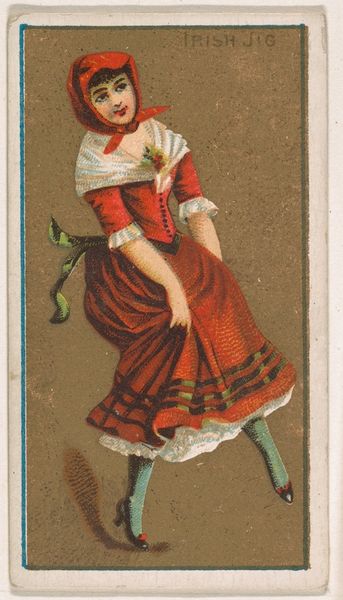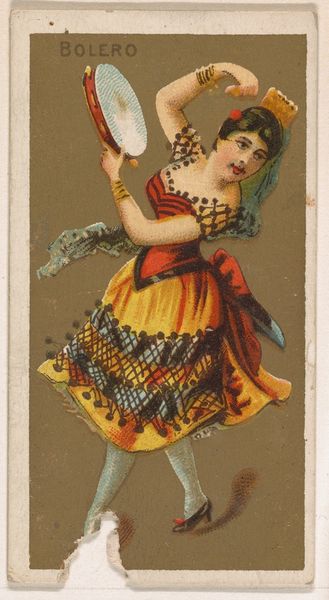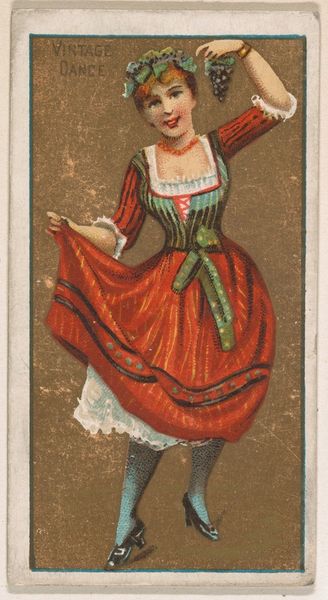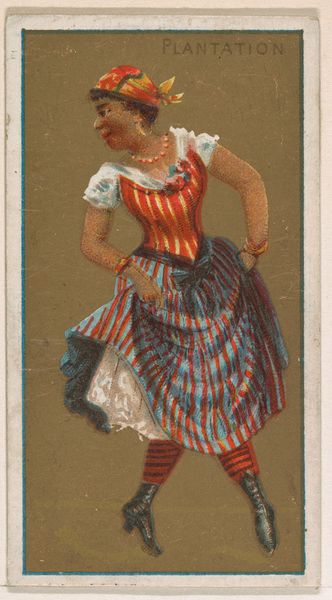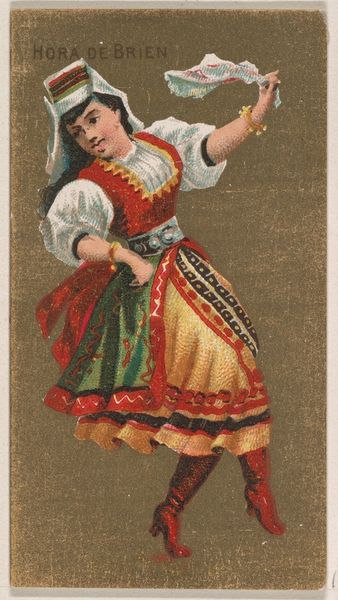
Highland Fling, from National Dances (N225, Type 2) issued by Kinney Bros. 1889
0:00
0:00
drawing, lithograph, print
#
portrait
#
drawing
#
lithograph
# print
#
folk art
#
folk-art
#
naive art
#
men
#
genre-painting
Dimensions: Sheet: 2 3/4 × 1 1/2 in. (7 × 3.8 cm)
Copyright: Public Domain
Curator: Let’s consider this print, currently residing at the Met, called "Highland Fling, from National Dances." Kinney Brothers Tobacco Company issued it around 1889. Editor: My eye is immediately drawn to the subject’s joyful, almost whimsical pose. The way her dress flares out and the bright tartan pattern evokes a feeling of lively folk celebration. Curator: Absolutely. Genre paintings like this became incredibly popular during the 19th century. The rise of industrialization sparked an interest in portraying rural life, almost a longing for an idealized past. This piece, printed using lithography, depicts what many would consider a traditional Scottish scene. Editor: And the figure is drenched in the symbolism of Scottish identity—the tartan, the bonnet, the dance itself. Tartan, particularly, evolved into such a powerful symbol, each clan laying claim to unique patterns, carrying centuries of cultural significance and evolving into the ubiquitous design we see today. It became so enmeshed in national identity. Curator: Precisely. But consider who is consuming these images. Cigarette cards like this weren’t necessarily meant for Scots, but a growing market in the United States and beyond. "National Dances" plays into this global fascination. The company exploits themes with proven selling power—in this case, a romantic vision of Scotland. It is a shrewd capitalist play, standardizing cultural markers into easily digestible imagery. Editor: I suppose, from that angle, there’s a risk that we fix these identities in place and over time diminish the richness of lived experience in favour of a visual stereotype, turning identity into a brand. Yet it also serves as a testament to enduring traditions, visually cementing them in our minds. Even the way she tilts her head holds a cultural attitude for me, as she presents both feminine appeal with strength. Curator: True, this is not an either/or proposition. On the one hand, the image can certainly perpetuate romantic stereotypes for profit. However, by embracing such strong symbols, the dance becomes a cultural affirmation of continuity as well. Editor: In essence, what began as product marketing morphed into a small portal to cultural identity. Curator: Well said. These cards demonstrate that art, even in its most commercial form, always participates in larger social narratives and debates.
Comments
No comments
Be the first to comment and join the conversation on the ultimate creative platform.
